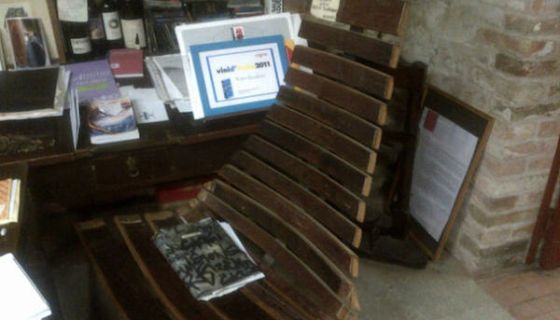Sad news came from the Langhe yesterday evening with the announcement of Giuseppe Rinaldi’s death just days before his seventieth birthday, a loss that will reverberate in the Langhe for some time to come. Being known for his opinions on a region rapidly growing in global popularity, he will doubtless prove prophetic in the long run. Although I met Rinaldi only a couple of times (the tragic consequence of us humans always thinking we still have plenty of time) and spoke with him in depth only once, it was an encounter I will not easily forget.
It was in 2010 when I visited Giuseppe Rinaldi at his estate in Barolo for the first time. Although I had been invited for lunch, it wasn’t to be a particularly convivial occasion. While being an early protagonist of organic viticulture in Barolo, he flatly refused to engage in a conversation about how this plays out in Barolo – because, it seemed, as described in this article, he did not want to be distanced from most other producers who were farming conventionally.
I found Rinaldi exhilarating and confusing in equal measure, and perhaps would have felt more at ease had I known that his nickname was ‘ il citrico’, the acerbic one. Another signature characteristic was the eternal cigar that accompanied him, even into the cellars and during the cask tasting that followed.
Originally educated to become a veterinarian, Rinaldi took over the reins of the family estate, founded in 1899, when his father died in 1992. Following in his footsteps, he retained strictly traditional winemaking techniques, using only indigenous yeast, long maceration times on the skin and ageing only in large oak casks. The picture above shows a chair he had made from a barrique. Below is the notice on it, top left of the back, claiming this is the best use for a barrique.

As one of the very few Barolo producers to continue the traditional practice of blending in order to achieve the greatest balance and complexity in the final wine, Rinaldi never made single-vineyard Barolos. He came into conflict with the wine law pursuing this ancient practice with the introduction of the MGA, Menzioni Geografiche Aggiuntive, in 2011. This is an official list of crus, or single vineyards, which made naming more than one, as he had always done, illegal. (See Battling bureaucracy in Barolo.) Why lawmakers didn’t take into consideration — or chose to ignore – one of the region’s outstanding and famous producers remains unknown.
While Rinaldi tried to nip any possible controversy in the bud during my visit 10 years ago, he was eager to make his opinion known when he felt it was needed. Only last year, in an interview with online newsletter Cronache I Gusto, Rinaldi spoke out forcefully against the local consorzio’s plans to increase the size of the denomination to capitalise on Nebbiolo’s worldwide success. He rightly argued that with the Langhe now having the status of UNESCO World Heritage site, it should be conserved rather than enlarged for commercial reasons, something that could become its downfall. And he also pointed out that from a historic point of view, Nebbiolo was planted only in the top sites, leaving less suitable plots to Dolcetto and Barbera.
These two varieties are now rapidly losing ground, their place being taken by Nebbiolo thanks to the increasing commercial success of Nebbiolo d’Alba and Langhe Nebbiolo as an attractively-priced introduction to the ‘real thing’, Barolo. His warnings that increased production would have a negative impact on the fortunes of Barolo and devalue the price of Nebbiolo grapes in the long term, have so far been ignored because more and more big players, as opposed to the traditional family businesses, are involved and are prioritising profit over everything else. These differences in opinion led to the Giuseppe Rinaldi estate leaving the consorzio, even though Rinaldi’s father had been one of its original founders.
A close friend of Bartolo Mascarello and his daughter Maria Teresa, and united with them in their view that traditional Barolo requires patience and long ageing (one of the very few in the world according to his beliefs), he always stuck to his guns. As a result the estate not only effortlessly survived the fashion for soft, oaky Barolos of the modernist era, but its wines, together with those of Bartolo Mascarello, became the poster child for the increasing numbers of wine lovers seeking traditional styles from the Langhe. Luckily Rinaldi lived long enough to see this come full circle.
Rinaldi is survived by his wife Annalisa and his two daughters, Marta and Carlotta, who as winemaker and viticulturist respectively, have followed their father in the estate. Judging from the fine 2014 that the two produced under very difficult circumstances in one of the coldest and wettest vintages since memory, the legacy is in very safe hands.
The last time I saw Rinaldi was late last year, when I was tasting that remarkable 2014 with Carlotta. The smell of a cigar wafted to where I was in the cellar. Rinaldi slowly walked by saying hello without looking up.
See also this 2014 wine of the week.














